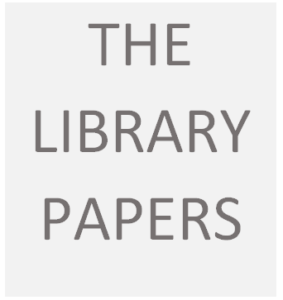Plan
Journal Entry 2
The Inquiry model
I am thinking about using a combination of the BCTLA Points of Inquiry and the Alberta Learning Focus on Inquiry as the model for my project. This is a bit complicated to juggle, but for the reasons I outlined in my first journal entry, this combination seems to address the question I raised there: how can you keep inquiry as an open and creative process while giving enough guidance to support students as they go through the stages? Stage 1 of Points of Inquiry—“Connect and Wonder”—addresses the first part of this question, whereas Stage 1 of Focus on Inquiry addresses the second part. It is important for students to establish connections of their own to an inquiry topic, but I think planning is also crucial to the eventual outcome of the project, and one of the features I most like about the Focus on Inquiry model is the inclusion of this stage. In Journal Entry 1, I looked at the “Connect and Wonder” stage. In this entry, my focus is on planning.
Stage 1 (or 2): Planning
In this stage
- Identify a topic area for inquiry
- Identify possible information sources
- Identify audience and presentation format
- Establish evaluation criteria
- Outline a plan for inquiry
I love this stage. I sit at my dining room table with my laptop and my loose-leaf, making notes, making diagrams, doodling, imagining, pacing when a good idea strikes. This is too often overlooked in many writing processes, but it is a low-stakes and creative way in to most projects. At this point, the project could be anything I want it to be. I experience exactly this exactly as Focus on Inquiry describes in the notes on metacognition, that during the planning stage, learners “get a picture of the whole process,” and “feel optimistic, yet uncertain and worried” (Focus on Inquiry, 28). I know from experience that if I take enough time at this planning stage, the rest of the project will go like clockwork (well, more or less), and I will feel calm and in control. If I don’t take this time, I will be off balance for the entire rest of the process, which will become increasingly difficult and confusing to go through. This is why I appreciated Fontichiaro’s observation that ”Saving time for exploration, presearch, and noodling through encyclopedias or other foundational resources before prompting for student questions will raise the caliber of the questions students create” (Fontichiaro, 2015). I would also add that capturing the ideas from that exploration and turning them into a plan will be invaluable to the eventual project.
Topic area for inquiry: What does a hero mean to you?
This will be part of a year-long theme which would be suitable for students in Grades 8-10 English Literature classes. They will read at least two literary works as a class while learning to apply the techniques for literary analysis, which they can then use independently or with guidance on their own projects.
This project provides an opportunity to meet the core competencies of critical and creative thinking; of both the personal and cultural identity, and personal awareness and responsibility aspects of the Personal and Social competency set; and of the communication Core Competencies described in the new curriculum. Also, it can offer the opportunity for inter-disciplinary inquiry, depending on the students’ choices.
Identify possible information sources
I am still in the stage of mapping out the parameters of the project, and looking informally for the sub-topics and background information that will be needed by students, teachers, and TL.
I am thinking about genre: probably good to start with textual versions of drama—probably Shakespeare, probably tragedy; then paired with contemporary fiction which incorporates mythic concepts (e.g. Freak the Mighty, Percy Jackson and the Olympians, American Gods (if nothing better comes up). I will need to search for information on character and plot archetypes, types of hero, multi-cultural sources of myth and legend. I need models for story analysis, character analysis.
I’ll need access to databases, websites, printed texts for teacher support—maybe Joseph Campbell’s Hero With a Thousand Faces? What other ones?
I need to select a curation method for storing and presenting all the multi-media resources I locate. Based on Brooks-Kirkland and Valenza’s suggestions, I’m thinking of trying ScoopIt. I have used Symbaloo in the past; it’s easy to paste links, but you can’t annotate material, and the visuals are quite restricted, I found. ScoopIt looks like there’s more opportunity for both annotation and visuals.
The guiding principles I will need to keep in mind when planning the project and identifying the learning resources are listed in the ERAC document Evaluating, Selecting and Acquiring Learning Resources (2008). Note: this most recent version was created prior to the development and implementation of the new curriculum; it is currently being revised, but nonetheless, many of the guiding principles still stand as I have listed them here:
- Support the learning outcomes of the curriculum
- Assist students in making connections between what they learn in school and its practical application in their lives
- Be developmentally and age appropriate
- Support integration across other curricula
- Promote hands-on activities and an applied approach to learning
- Address the learning styles and needs of all students, including ELL students and students with special needs
- Assist both specialist and non-specialist teachers
- Provide assessment and evaluation strategies
- Promote personal and intellectual development
- Support teachers in providing learning opportunities to develop information technology and media literacy skills
- Encourage students to use, access, evaluate, analyze, process, and present information using current technology
- Promote awareness of issues and concepts involving science, technology, and society
- Have instructional and technical design integrity.
- Comply with provincial guidelines for social considerations
- Reflect the diversity of cultures, including Aboriginal, in British Columbia and Canada
Additionally the materials should help promote critical and information literacy.
Audience and Presentation Format
I think it’s important to keep these things in mind. In keeping with the Communication competency, it means giving students choices about how they want to present their findings, in consultation with the classroom teacher. Introducing these ideas at the start of the project will help keep them focused both on their end goal—presenting their findings, and on who they will be talking to. I will revisit Stripling’s Curriculum Connections through the Library (2003) for more information on literature projects.
In the case of my project, I will submit my findings as a hard copy and on my website. I will include other presentation formats within the document/website as I identify the needs.
Establish Evaluation Criteria
As Wiggins and McTighe say, designing backwards from the desired outcome works best. This means the instructional design needs to begin with the end in mind. Again, this is important information for students, teacher, and TL. The evaluation process needs to be developed with the input of the enrolling teacher. Ideally students would have some input, though not necessarily the final say, in how they would like to be assessed.
For my project, the evaluation criteria are already established in the course material.
Outline a plan for Inquiry
Again, an important consideration at the start of the project. Especially since many students, not just those with identified learning disabilities, have difficulty sequencing and “organizing their creative ideas into products,” “sustaining enough interest and motivation to finish,” difficulty following directions and tendencies towards impulsive decision-making (Hua et al., 2014).
For my own project, I have so far identified the following tentative timeline:
- Assignment 2: Curation of the 10 Best Inquiry Resources (Oct 23)
- Journal Entry 3 (Oct 28): Identify collaboration roles; plan for joint consideration of resources needed; discuss presentation formats; identify possible assessment and evaluation methods.
- Learning Log 4 (Nov 11): Multi-literacy material and considerations
- Assignment 3: (Nov 26): Designing an Inquiry Unit—completed project
Works Cited
Alberta Learning. (2004). Focus on Inquiry. Edmonton, AB: Alberta Learning.
BC Ministry of Education Curriculum Guide: https://curriculum.gov.bc.ca/
Brooks Kirkland, A. (2013). Teacher-librarians as content curators: Strong contexts, new possibilities. School Libraries in Canada 31(2): n.p.
Ekdahl, M., Farquharson M., Robinson, J., and Turner, L. (2010). Points of Inquiry: A Framework for Information Literacy and the 21st Century Learner. Vancouver, BC: BCTF/ BC Teacher-Librarians’ Association.
Educational Resource Acquisition Consortium. (2008). Evaluating, selecting and acquiring learning resources: A guide. Vancouver, BC: ERAC.
Fontichiaro, K. (2011). Let it rest: Reflecting on instructional practice. School Library Monthly 27(8): 8-10.
Hua, Olivia, Bruce Shore, and Evgeniya Makarova. (2014). Inquiry-based instruction within a community of practice for gifted-ADHD college students” Gifted Education International Vol.30 Issue 1, 2014
Stripling, B. K. (2003). Inquiry-based learning. In Curriculum Connections through the Library. Eds. B. K. Stripling & S. Hughes-Hassell. Westport, CT: Libraries Unlimited.
Valenza, J. (2012). Curation. School Library Monthly. 29(1): 20-23.
Valenza, J. (2014). Librarians wanted for smashing, blending, toolkit building. In Neverending Search(blog, July 26, 2014). School Library Journal.
Wiggins, G. & McTighe, J. (2005). Appendix. Understanding by Design (Expanded 2nd edition). 327-332. Alexandria, VA: ASCD. (Note: this link is for the appendix “Understanding by Design Framework” which is available online as a PDF. The entire book is available for purchase here: https://www.amazon.ca/Understanding-Design



